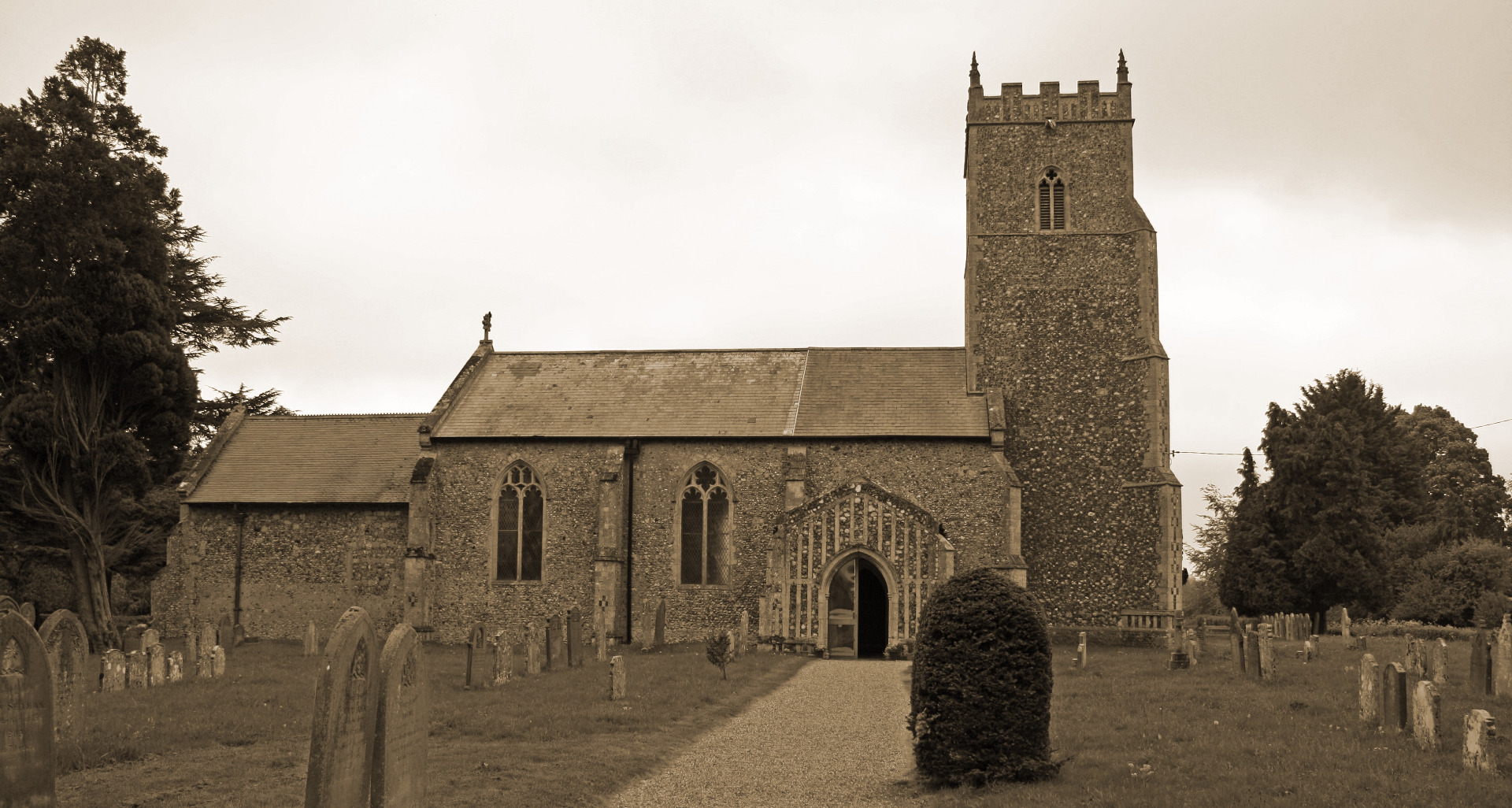St. Mary's Church
by Paul Cattermole
Chapter 1 : Pentney Priory, and the Rectory of Tharston
The parish church was considered to be part and parcel of the manor, which in 1086 was held by Robert de Vaux, as a sub-tenant of Roger Bigot, one of William the Conqueror's richest tenants-in-chief. Many of Norfolk's earliest monasteries (such as Wymondham, Castle Acre, and Binham) were founded by wealthy Norman laymen, who wished to provide a suitable burying place for them and their families. Not only was the foundation itself an act of piety, which would be favourably regarded; but the prayers of a succession of monks could be expected to secure a relatively easy passage through purgatory. Founding a Priory was an expensive business, which went well beyond the initial cost of building. Estates had to be made over to the monastery which would provide a secure income in the future; and when Robert de Vaux decided to found his priory at Pentney, in west Norfolk, the rectory of Tharston was among the properties which he gave to support it. Later manorial documents show that Pentney Priory drew rents from perhaps four-fifths of the Tharston glebe land (which would normally have supported the rector), and was entitled to a similar proportion of the tithes of all produce grown in the parish. The Prior appointed a vicar, who would live on the remainder of the rectory income, and carry out the duties of a parish priest in Tharston. One drawback, from the priory's point of view, was the obligation to maintain, and rebuild if necessary, the fabric of the chancel at Tharston (the parishioners looked after the rest of the church); but on the whole arrangements of this kind worked greatly to the benefit of the monastery.
After the dissolution of Pentney Priory in 1534, while other priory properties were granted to Thomas Mildmay, one of the King's officers, Tharston Rectory was retained by the Crown, and Vicars were appointed by the Sovereign until c.1600, when the Rectory of Tharston was granted to the Bishops of Ely. Instead of putting in a steward to run the Rectorial estate by cultivating the glebe, collecting the tithes in kind and selling the produce; the Bishops of Ely leased the Rectory to a succession of farmers who paid fixed rents, and collected the Rector's income from the parish, making themselves a good profit in the process. Vicars managed to exist reasonably comfortably too; and in the 18th century even they obtained the bishop's licence to farm out their portion of the vicarage estate, and employ a curate on a small stipend.
The Tithe Act of 1836 was intended to replace the cumbersome method of payment in kind by a rent charge based on the value of lands and properties, and the Tharston Award was drawn up in 1839. This less troublesome method meant that the Rector and Vicar could now collect fixed sums of money directly from landowners, and there was no longer any profit to be made from taking a lease of the Rector's portion. When General Harvey's lease of the tithes ran out in 1847, he did not bother to renew it, and by 1864 the Rectory had become vested in the Ecclesiastical Commissioners. In 1871 the tithe rent charge was formally divided between an endowment for the Vicar of Tharston (42% of the total) and the permanent estate of the Dean and Chapter of Norwich (58% of the total). The right of appointing the Vicar then passed to the Dean and Chapter of Norwich, who are the present Patrons; and are still responsible for a proportion of any repairs to the chancel.
Tharston, with a Vicar, was very much more fortunate than many other local churches belonging to monastic houses, where the entire income from tithes went out of theparish, leaving only the smallest pittance to pay a parochial chaplain. The inhabitants of Fundenhall for example, who had no Vicar, petitioned Parliament in 1640 to the effect that the lay Rector "will not allowe but tenn or twelve pound per annum, and will not suffer a Clergiemen to dwell in the Parsonage, by reason of which we have had 40 retuures of Curates in the memory of one man, and our curate oft-times dwelling 5, or 6 miles from us".
(c) Barbara Cattermole and family, first published in 1992 by Paul Cattermole. No part of this publication may be reproduced, stored in a retrieval system, or transmitted in any form, or by any means, without the prior consent of the author's family.


